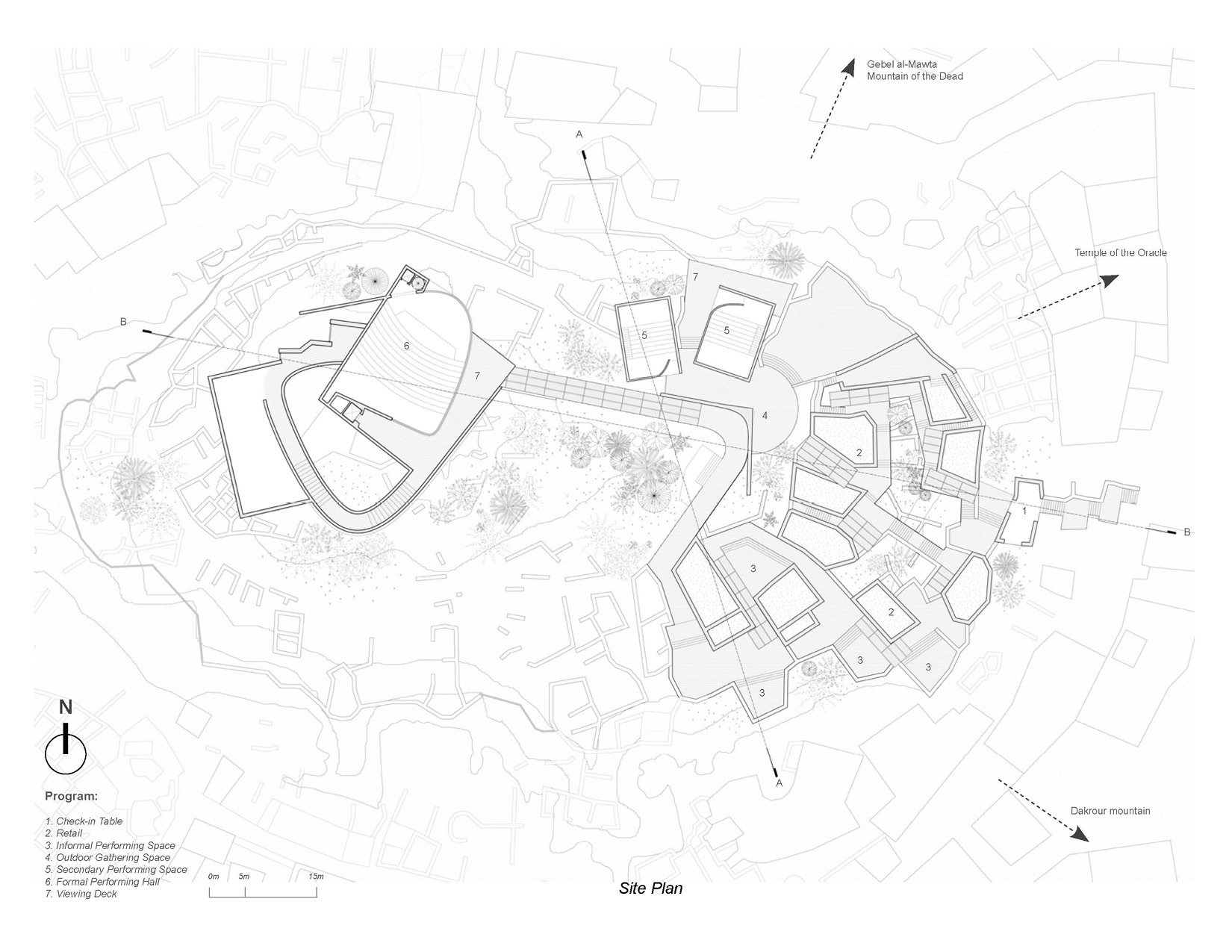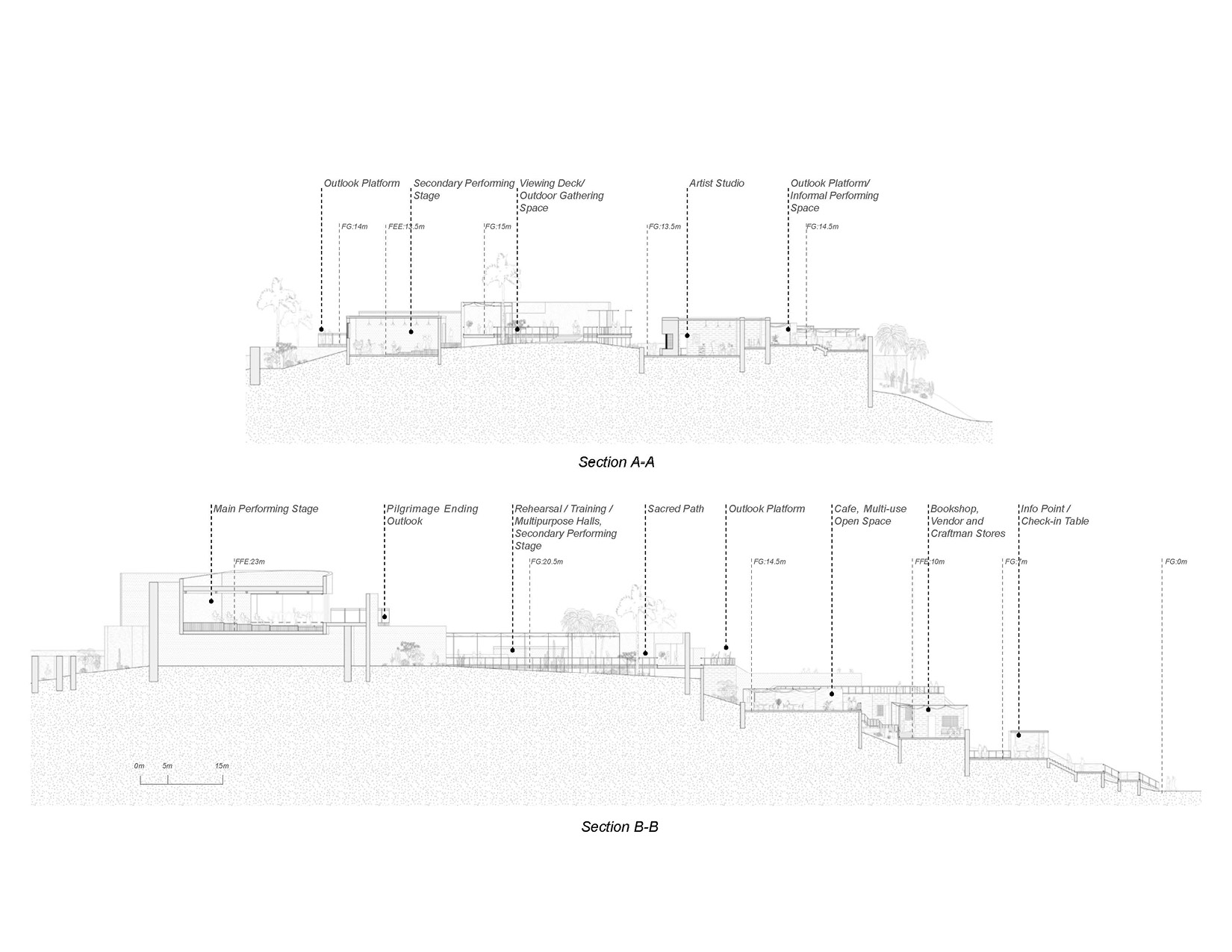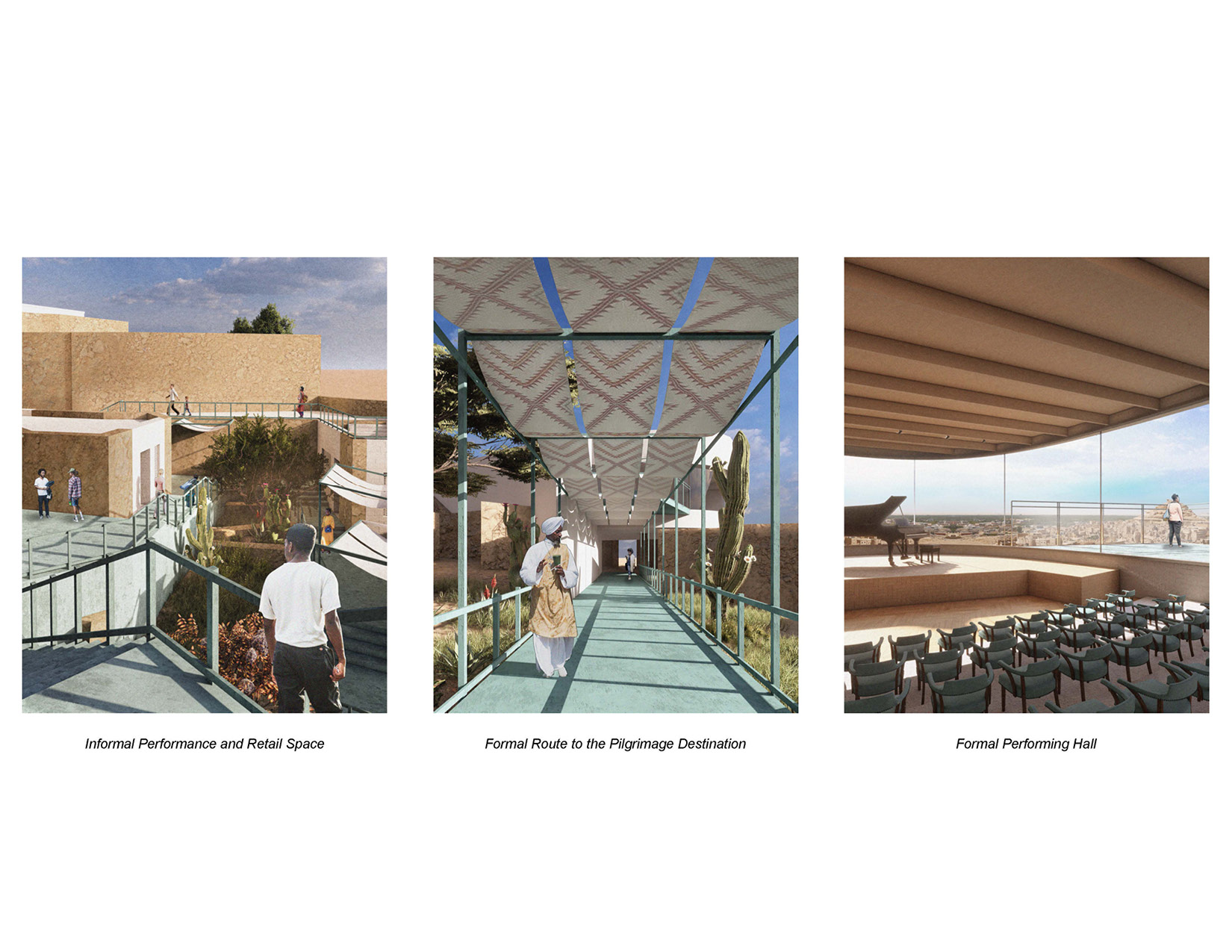Performing Oasis: Art Pilgrimage
- Time: 2023.06 - 2023.08, Academic work
- Collaboration: Sihan Zhao
- Location: Siwa, Egypt
- Medium: ArcGIS Pro, Rhino, Adobe Suite
Project description
Located at the high point at the center of Siwa Oasis, our site is located on the Shali Fortress's historical ruins. By doing in-depth research about the historical and cultural context of the selected site, we find that important historical locations in Siwa are all located on several high points in the city, each with its unique meaning, but all involve some types of loss throughout history. Our site, Shali Fortress, is destroyed by an unexpected storm; Mountain of the Dead links to the question of life and death; Oracle Temple lost its last guard ten years ago; Dakrour Mountain's visitors with disease are waiting for curation through therapeutic sand.
Besides, having performance as a theme for our project enables us to experience more emotional and subtle feelings formed by immersing ourselves in the field of art. In this way, our site design aims to echo the memories of Siwa's other high points, which provide a way for people to embrace imperfections and remember the sourness and loss through art and performance.
Because Siwa is located on the historical West African pilgrimage route and serves as a stop for pilgrims, we are reimaging a present version of art pilgrimage, which is to make the performing art stage a sacred destination, the progression to the performing hall as a pilgrimage route, and, as a result, accentuate the importance of performing art and local culture.
We decided to choose our starting point from the east side because most people arrive at Siwa from Cairo by bus, which is on the east. The color-coded route will lead people to climb up and eventually reach the formal performing hall. During the procession, visitors will experience a transition from secular to sacred. The pilgrimage route starts with smaller architectures and more meandering roads, which is where local art, retail, and informal performing spaces are located. Later, as visitors gradually move up to the mountain, the route becomes straighter and more linear, transitioning to a more sacred performing space. Eventually, when the visitors finally reach the top, they will not only arrive at the most formal performing hall but also enjoy a spectacular view of the entirety of the historical ruins at Siwa Oasis as well as look back at the pilgrimage route they have been through. The orientation of the performing hall and the series of architecture along the way are also arranged in a spreading way that faces the direction of the Mountain of the Dead, Oracle Temple, and Dakrour Mountain, which echoes the Siwa Oasis's vital role in memorizing and celebrating imperfection.
For this project, we want to preserve the forms and organization of the castle ruins on the site. In terms of material, we chose white cement brick to form a contrast with the yellow sand brick used for the existing ruins. We also color-coded the route to imitate the Salt Lake color at the Oasis, making the continuous route a running stream.




